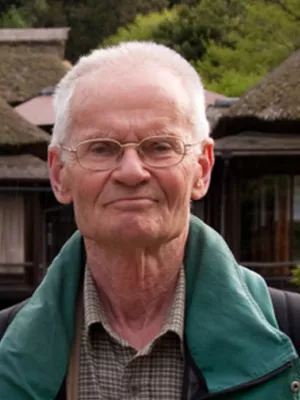
Björn Berglund
Professor emeritus

Long-term changes in floristic diversity in southern Sweden: palynological richness, vegetation dynamics and land-use
Författare
Summary, in English
Abstract in Undetermined
The rarefaction technique is applied to two Holocene pollen sequences (covering the last 12,000 calendar years) from two lakes in southern Sweden. One represents an open agricultural landscape, the other a partly wooded and less cultivated landscape. The inferred palynological richness is interpreted as an approximate measure of floristic diversity at the landscape scale. The overall trend is an increased diversity from the mid-Holocene to the Modern period, which is linked to a parallel rise in human impact. The pattern is similar for the two sites with peaks corresponding to archaeological periods characterised by deforestation and expanding settlement and agriculture. The highest diversity was reached during the Medieval period, about A.D. 1,000-1,400. Declining diversity during the last 200 years characterises the agrarian landscape. These results confirm, for southern Scandinavia, the "intermediate disturbance" hypothesis for biodiversity at the landscape scale and on millennial to century time scales. They have implications for landscape management in modern nature conservation that has the purpose of maintaining and promoting biodiversity.
The rarefaction technique is applied to two Holocene pollen sequences (covering the last 12,000 calendar years) from two lakes in southern Sweden. One represents an open agricultural landscape, the other a partly wooded and less cultivated landscape. The inferred palynological richness is interpreted as an approximate measure of floristic diversity at the landscape scale. The overall trend is an increased diversity from the mid-Holocene to the Modern period, which is linked to a parallel rise in human impact. The pattern is similar for the two sites with peaks corresponding to archaeological periods characterised by deforestation and expanding settlement and agriculture. The highest diversity was reached during the Medieval period, about A.D. 1,000-1,400. Declining diversity during the last 200 years characterises the agrarian landscape. These results confirm, for southern Scandinavia, the "intermediate disturbance" hypothesis for biodiversity at the landscape scale and on millennial to century time scales. They have implications for landscape management in modern nature conservation that has the purpose of maintaining and promoting biodiversity.
Avdelning/ar
- Kvartärgeologi
Publiceringsår
2008
Språk
Engelska
Sidor
573-583
Publikation/Tidskrift/Serie
Vegetation History and Archaeobotany
Volym
17
Issue
5
Dokumenttyp
Artikel i tidskrift
Förlag
Springer Science and Business Media B.V.
Ämne
- Geology
Nyckelord
- southern Sweden
- rarefaction analysis
- disturbance
- human impact
- prehistoric land-use
- landscape management
Aktiv
Published
ISBN/ISSN/Övrigt
- ISSN: 0939-6314

